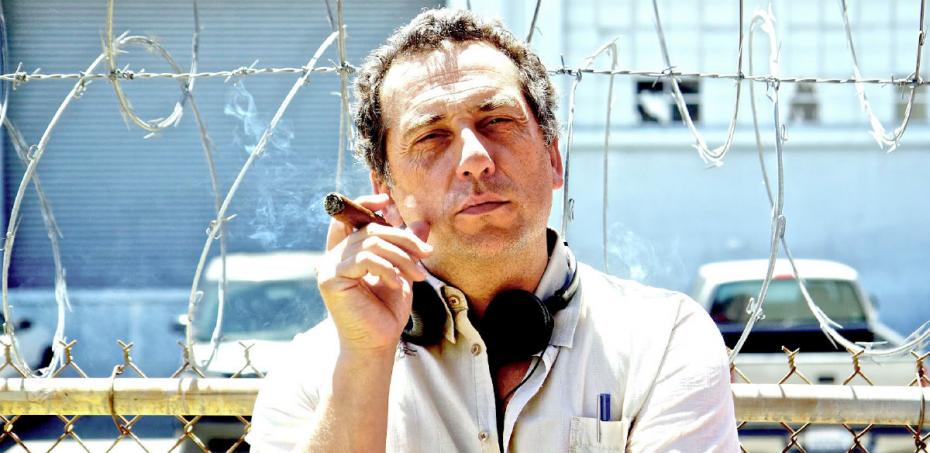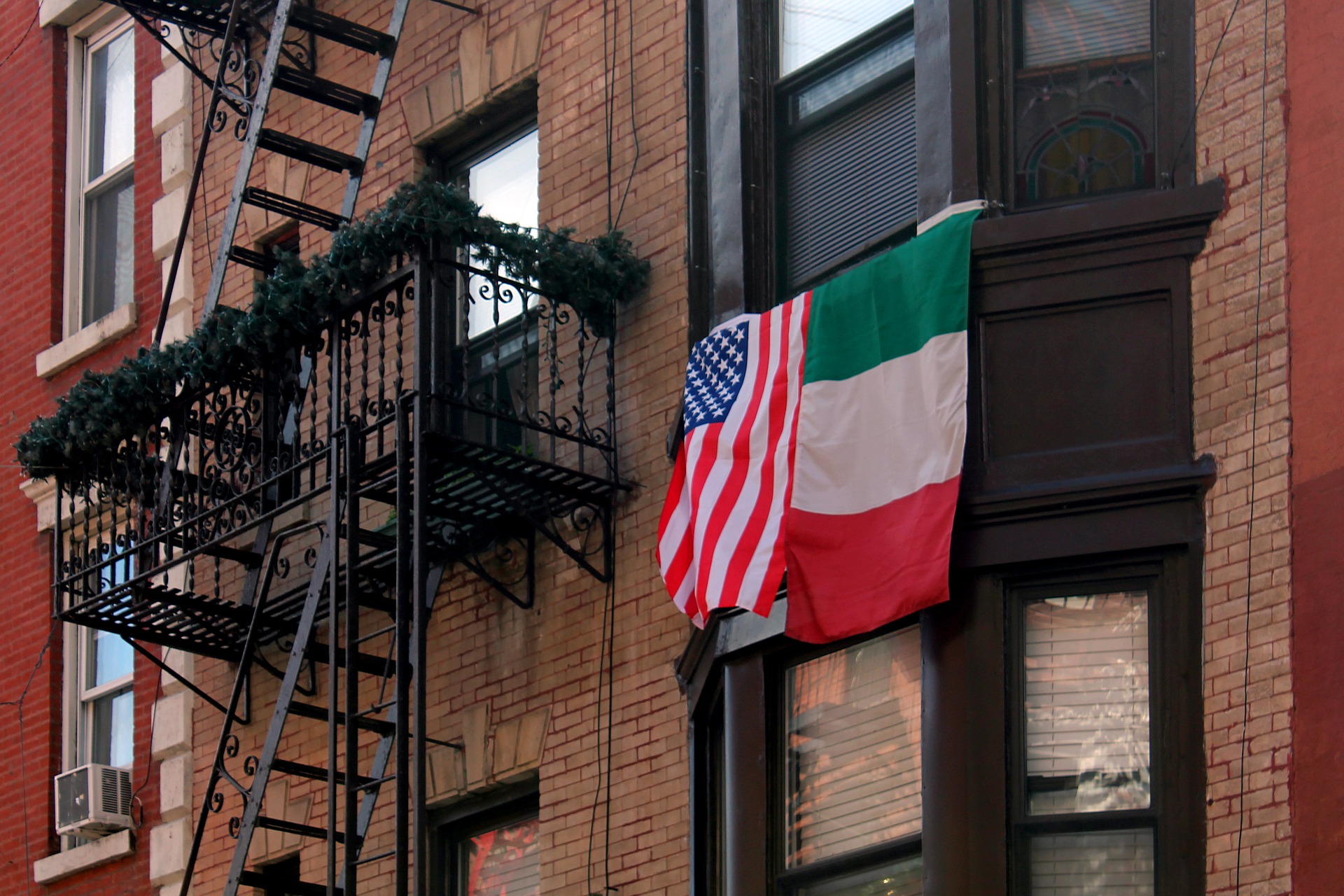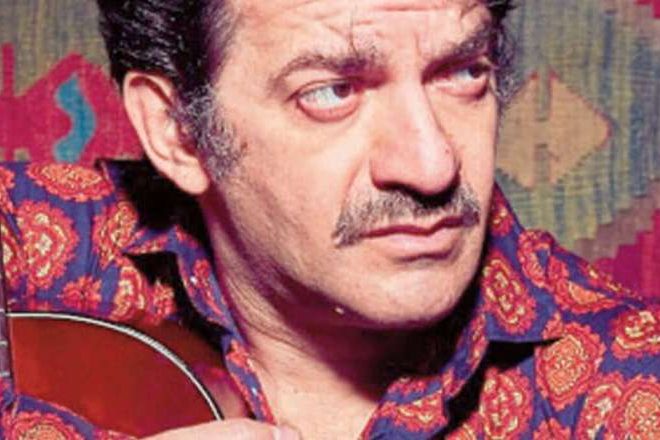Giorgio Serafini – who was born in Brussels, Belgium from Italian parents and currently lives in L.A. – must have been charmed by Political Science and International Relations, from spending his youth in the de facto capital of the European Union.
I’m referring in particular to one of his most acclaimed artistic films, Blu Notte (1992), whose purpose is not to document the ’89 Fall of Berlin’s Wall as it truly happened, but rather to rearrange them in an original “collage,” in which the original events are recognizable yet invented.
Giorgio’s life encountered terrible tragedy on July 11, 2005, when he lost his teen daughter, Laura, in a fatal accident in Brussels.
Since then, Giorgio never looked back at his past, but rather always ahead.
Parallel to a prolific and successful career as TV and film director/writer, working with such talents as Dolph Lundgren, Wesley Snipes, and Roy Scheider, Giorgio sublimated his pain and rage from his horrible trauma in his two cathartic films, the 2011 drama Johnny’s Gone (that has gained plenty of accolades) and the Dantesque fairy-tale, Don’t Let Me Go (yet to be released).
Please, introduce yourself. What is your cultural background?
I’m a screenwriter and film/TV director. I was born and raised in Brussels, Belgium, from Italian parents, hailing from Rome.
Growing up, I used to live in an Italian-speaking community, and I attended Italian schools.
In 1994, I moved in Los Angeles. For several years, while I was directing Italian TV series, I traveled back and forth from the US to Italy.
With no formal training in film school, you credited Brussels’ Museum of Cinema as your real teacher. Could you elaborate on that?
Besides the rich museum’s collection, there are two screening rooms. The bigger one, featuring 100 seats, run a daily program of three films. The ninety screenings per month revolved around specific themes or authors.
The second one, featuring a more intimate space of just thirty seats, screened two silent films a day, with live piano accompaniment.
The museum used to be subsidized, so the screenings’ ticket was ridiculously cheap. Also thanks to its affordability, I spent entire days there, enchanted by the magic happening on screen.
The only professional class I took, was the screenwriting one taught by late lamented Professor Frank Daniel – developer of the eight sequence approach, that is the current standard in the writing process of any screenplay.
He held leadership positions at top institutions, such as co-chairing with director Miloš Forman the Columbia University School of the Arts Film Department, serving as the Sundance Institute’s first Artistic Director, as well as becoming dean of USC School of Cinema-Television.
He was a great teacher, and I was lucky enough to have the immediate chance to direct my own first screenplay.
That leads us to your first project, the documentary, The Walls of Sand, for which you drew inspiration from Gaetano Tumiati’s autobiographical book, Prigionieri nel Texas. What fascinated you about that work?
Originally, I wanted to make a narrative feature film based on Tumiati’s book. Project, which I realized in 2002, with Texas ’46 (released in the States as, The Good War).
Back in December 1989, I received the “European Script Fund” to develop a script about that same topic.
Talking with a producer, interested in the project, we agreed upon filming all the field research phase and made a documentary out of it. My connection with him revealed to be key in order to get a wide TV distribution.
It dealt with the controversial topic of Italian Prisoners of War, who, after the end of WWII, were still detained in Texas in 1946, because they declared themselves fascists.
After the Armistice, signed by Italy on September 8, 1943, the US administration was in a state of political confusion, and didn’t know whether to consider the Italian prisoners as enemies or allies.
Italian officers were asked to sign a declaration, stating that they were not fascist any longer and that they would have enrolled in the US Army, on duty in some North American military post or harbor.
The ones who refused to sign the document, were isolated and interned into two camps, one of which was located in Hereford, Northern Texas.
Initially, Italian TV didn’t want to produce it, because the topic was regarded as too provocative and wrongly seen as pro-fascist.
My documentary was co-produced by RTL, Canal Plus, German TV and Swiss TV. However, once it was brought to completion, Rai Tre – traditional Italian left-wing channel – finally bought it and aired it.
In 1992, you wrote and directed, Blu Notte, which received a good reception. What was it about?
My interests in political science and international relations hailed back to my university’s studies.
Blu Notte tells fictional events, that I entirely made up, but presented as if it was a true story. The film follows four characters as they tear down the Berlin Wall in one day, in order to escape to the other side.
While we hear the voice over of one of the lead characters telling us how they did it, I inserted clips of real footage, so that the resemblance with reality results pretty impressive.
We shot it at the end of 1990, all in Rome, with the exception of one week in Berlin.
The connection with one distributor in Italy, developed during that film, led me to a collaboration on an international co-production, which eventually made me relocate to L.A.
Let’s talk about your move in Los Angeles, in 1994. How was the adjusting process to Hollywood?
Since I was a child, I dreamed about the United States. My room’s wallpaper was decorated with the stripes on two walls, and the stars on the other two.
Then, growing up, I visited the US in several occasions. In the mid-eighties, my girlfriend and I took full advantage of a good deal, offered by Trans World Airlines (TWA, which was acquired by American Airlines in 2001), consisting in a package of ten domestic flights for a little extra on the transatlantic route.
For two years in a row, we travelled across every corner of the States and I loved it.
Up until two years ago, I’ve always lived in Hollywood. It’s fun to think how, when I got here, I was staying in a dingy motel in Sunset Blvd. and, instead, two years ago, I moved out to a large villa on Nichols Canyon.
Despite my road to success was winding at times, I can’t complain about living and working here.
In summer 2000, you finally started shooting Texas ’46 (a.k.a. The Good War), again adapted from Tumiati’s journal. Do you still consider it, to date, as your passion project?
It certainly is one of my passion projects. I do believe that, once a film is edited, it stops being the director’s film and becomes the audience’s one.
I enjoyed and had a lot of fun working with legendary actor, Roy Scheider, while it was more challenging to work with Italian famed actor, Luca Zingaretti.
In general, though, I never look back at what I’ve done, but rather always looking ahead. I never even watch any of my movies, once they’re completed.
Among your recent films, which is the one you’re most proud of and why?
Recently, I’ve been focusing more on commercial movies, especially thrillers and action movies. It’s challenging but also fascinating to work on others’ scripts and to find a way to make those relevant to you.
I’m really proud of Johnny’s Gone (a.k.a. My Boy), a very personal story, inspired directly by the loss of my daughter Laura. It was by far the one with the lowest budget and, simultaneously, it had a great reception.
I feel a certain sense of pride, every time I bring my latest movie to completion. Right now, I’m finishing the editing for Flashburn, my first sci-fi ever, shot last February.
Please, tell us more about your upcoming projects.
In this industry, you’re constantly working on dozens and dozens of projects. Only a couple of them will ever see daylight and it’s impossible to foretell which one is going to be.
The main project, I’m currently working on, is a European TV series, an Italian-German-Scandinavian co-production.
It’s going to be an English-speaking historical piece, to be partially shot in Bavaria, Germany. We’ll start preproduction in January and, supposedly, starting to shoot in April.






























